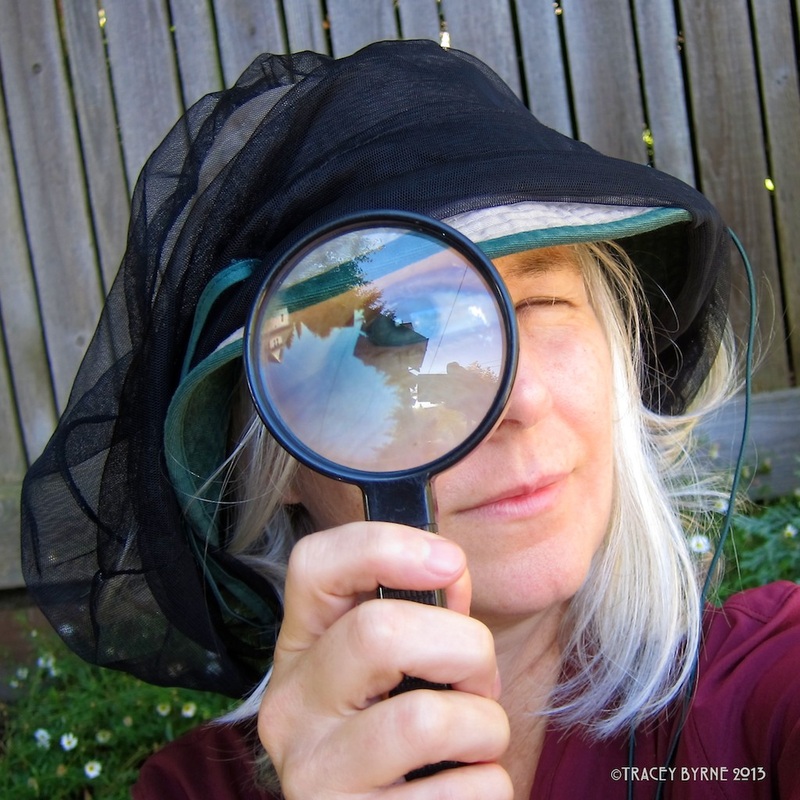| nesting & fledging ©T. Byrne | We have robins (Turdus migratorius) nesting in the eaves of our house, right above my studio window; I feel like a robin nanny, as I am so aware of all the different stages of their nesting cycle. This is the second round for our robins, with one more to go! After the nestlings had fledged in the first round, I was concerned that something had gone wrong, as one pin-feathered bird was parked on our patio table for several hours one afternoon. Whenever we walked by it would freeze-which, apparently is its only strategy when at this stage, i.e. playing statue. Mom and dad robin were flying around and coming in with food, so we left it alone. Unfortunately, this baby bird did not make it (see May 6 post). It turns out that for robins the fledgling stage is both awkward and dangerous, with an average mortality rate of 42%. This is because new fledglings have almost no skills: they can’t feed themselves, can’t fly well (or, in many cases, at all) and can’t do anything to defend themselves if something terrifying like a weasel, snake, crow, or a free-roaming cat decides to eat them. If the fledglings are part of that lucky 58% that learn to fly, they face their next high mortality challenge: learning to find their own food. Just what are the odds for this awkward little guy? |
| Facts from the Cornell Lab of Ornithology: *On average, only 40 percent of nests successfully produce young (though most robins can produce three broods each year). *Only 25 percent of those fledged young survive to November. From that point on, about half of the robins alive in any year will make it to the next. *Despite the fact that a lucky robin can live to be 14 years old, the entire population turns over on average every six years. *Robins eat different types of food depending on the time of day: more earthworms in the morning and more fruit later in the day. *Because the robin forages largely on lawns, it is vulnerable to pesticide poisoning and can be an important indicator of chemical pollution. |



 RSS Feed
RSS Feed
